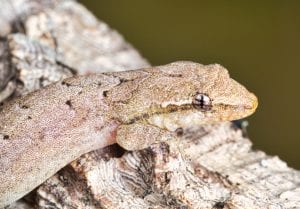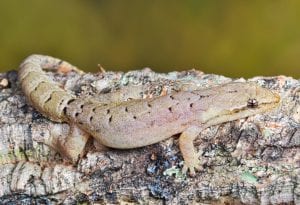Mourning geckos arrived in the reptile keeping scene over the last few years, and have become very popular – especially with natural terrarium enthusiasts. They are a pretty gecko, small and characterful, but in many ways they have captured peoples imaginations due to their breeding habits. This species breeds with no males, they are parthogenic, only females exist and they reproduce without the opposite sex. They do copulate, this is known as pseudo-copulation. They are a very easy species to breed, and produce large amounts in a short time.
In the wild they naturally occur in coastal areas in lowland forests in the Indian and Pacific Ocean regions. However they have been introduced, probably by hitch hiking on docked ships, in several areas around the world. A very successful species.
In captivity they are an easy species to cater for, as long as some basic needs are met. They are a nocturnal species and are mainly active from early evening through the night, finishing activity at dawn. Current thinking is to provide a 6-7{cb5d0a8cf0c44aef2db327d9ab0dba08dd09aed1126b509e5fa01d3aaa87fe47} UVB light during the daytime to give a low powered dappled UVB exposure. Provide plenty of coverage with plants and climbing branches to give this dappled shadow requirement. A popular choice is the Arcadia ShadeDweller range of T5 fluorescent tubes. Temperatures need to be no higher than around 26C during the day, down to around 20C at night. There are several ways to provide this, some keepers used halogen and incandescent light emitting bulbs, others prefer ceramic heaters (no light) as this can provide heat for the night too.
 House in a glass vivarium / terrarium of around 60-100cm long for a small group of geckos. They are sociable, but will form a hierarchy. They do especially well in a naturally planted terrarium with real plants such as ficus, bromeliads etc. Many keepers make community terraria, meaning they share their home with other species such as frogs. Poison Dart frogs are a common choice to co-inhabit. Provide plenty of cork bark to hide behind, and climbing branches. Humidity needs to be high, at around 90{cb5d0a8cf0c44aef2db327d9ab0dba08dd09aed1126b509e5fa01d3aaa87fe47} – regular daily spraying (or a spray system).
House in a glass vivarium / terrarium of around 60-100cm long for a small group of geckos. They are sociable, but will form a hierarchy. They do especially well in a naturally planted terrarium with real plants such as ficus, bromeliads etc. Many keepers make community terraria, meaning they share their home with other species such as frogs. Poison Dart frogs are a common choice to co-inhabit. Provide plenty of cork bark to hide behind, and climbing branches. Humidity needs to be high, at around 90{cb5d0a8cf0c44aef2db327d9ab0dba08dd09aed1126b509e5fa01d3aaa87fe47} – regular daily spraying (or a spray system).
They are insectivorous, and will eat all manners of small insects – commercially appropriate livefood includes suitable sized crickets and locusts – but of course they love curly wing flies and other livefood. All livefood will require gut loading with a good quality loader, and powdered with a reptile balanced vitamin and mineral supplement before being offered.
A highly recommended interesting species, check them out in store.
